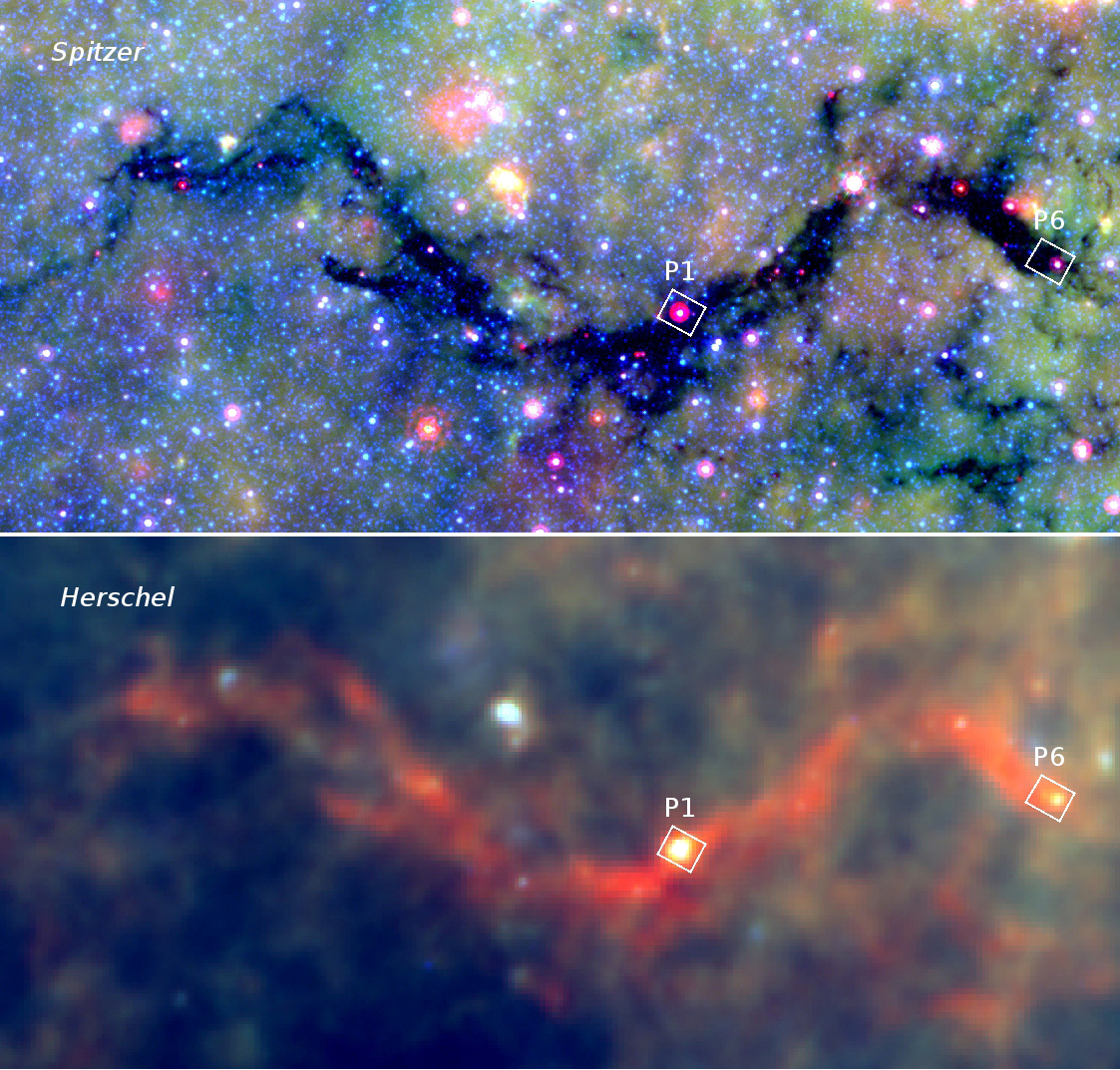Ke Wang (王科)

Assistant Professor
Room:
219
Email:
Research interests:
Star formation, interstellar medium, radio interferometry
Research Highlights:

Ke Wang observes high-mass star formation at high-resolution. He is an expert in submillimeter interferometry and has served in the European ALMA Regional Center and the SMA operations team for more than 5 years. His research characterizes the initial conditions of high-mass star formation throughout the Galaxy by observing various samples of molecular clouds in different Galactic environments. Observations at multiple scales are made using submm/mm/cm interferometers including ALMA, SMA, and VLA, and space- and ground-based single-dish telescopes including Herschel, GBT 100m, Effelsberg 100m, Nobeyama 45m, IRAM 30m, JCMT 15m, APEX 12m, CSO 10m, and SMT 10m. Currently, he mainly works on three projects:
(1) resolving starless infrared dark clouds; he has discovered one of the few known high-mass prestellar cores, a long-sought key observable for a leading theoretical model of star formation;
(2) a Galaxy-wide census of the largest molecular filaments; he has made the first census of the densest, coldest, velocity-coherent large-scale (>10 pc) filaments in the Milky Way; and
(3) a systematic survey of dense molecular clouds in the outer Galaxy; he is principal investigator of the ESO Public Survey SAMPLING (SMT "All-sky" Mapping of PLanck Interstellar Nebulae in the Galaxy) and co-investigator of other complementary surveys, including superMALT, SEDIGISM, and SCOPE.
His research has been highlighted by scientific organizations including AAS NOVA, ESA, Harvard, and the UK Royal Astronomical Society, and public medias including ScienceDaily and Space.com.
Recent public press release:
ESA Feature Article: Herschel's hunt for filaments in the Milky Way
AAS NOVA Feature: Building Up the Milky Way’s Skeleton
Harvard CfA Press Release: SMA Unveils How Small Cosmic Seeds Grow Into Big Stars
See his publications in this ADS library.
To find out how did he become an astronomer see this ESO Messenger article for a glimpse.
Career path:
2018-present: Assistant Professor, KIAA-PKU
2015-2018: Associate, ESO/ALMA (Garching, Germany)
2012-2015: ESO Fellow, ESO/ALMA (Garching, Germany)
2011-2012: Erasmus Fellow, Kapteyn Astronomical Institute (Groningen, Netherlands)
2006-2012: PhD in Astrophysics, Peking University (Beijing, China)
2008-2011: SMA Pre-doctoral Fellow, Harvard CfA (Cambridge, MA, USA)
